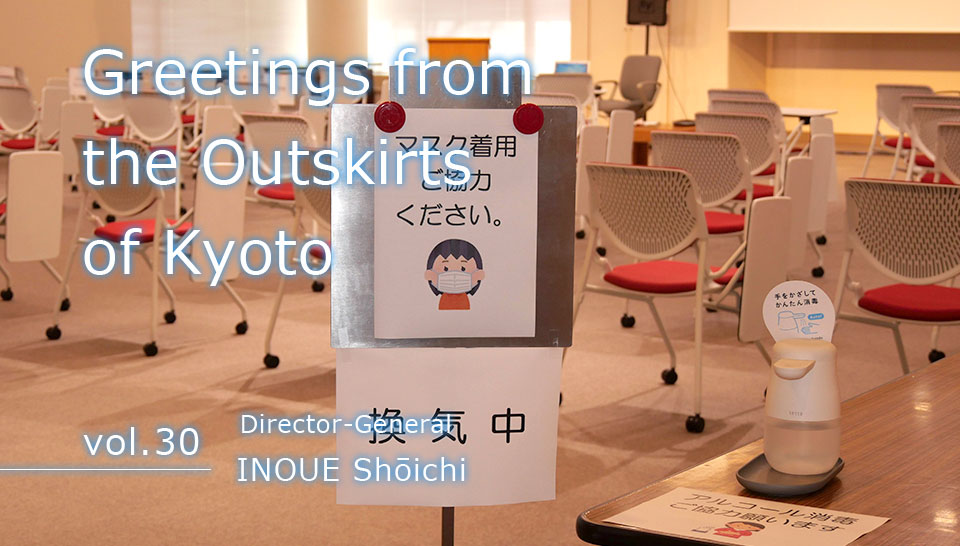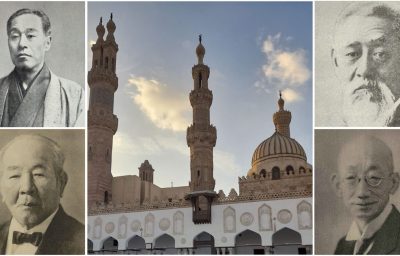COMMUNICATIONS
An Edo Intellectual’s Scrapbook and the Study of Sino-Japanese Trade
I arrived at Nichibunken in July 2022, year three of the Corona virus pandemic. This was two years behind schedule, but I am delighted to have been able to enjoy an extended stay here in Kyoto, a city I love. I spent my time as an exchange student in Fukuoka in Kyushu, and had visited Kyoto on several occasions. But these were all brief stays, and I was never able to immerse myself in “every-day Kyoto.” Nichibunken is a research center far removed from the city center, surrounded by abundant nature. The charm for me has been to look from my window at the beauty of the changing seasons as I work away in a tranquil, but very well equipped, environment. I was also fulfilled by being able to deepen my understanding of nature and historical culture, visiting famous sites in Kyoto and art galleries and museums with my family.

Autumn Scenes at Katsurazaka Bird Park Adjacent to Nichibunken (Author Photograph)
My area of research is the history of Nagasaki trade and of the East Asian maritime region. The specific project I pursued at Nichibunken was cultural dissemination within the Nagasaki trade; I am especially interested in commodities, traders and interpreters. I am at present attempting to research the contents of imported goods from China to Japan, and the routes along which trade flowed. I am making use of scrapbooks of items collated by such men as Morishima Chūryō, Kimura Kenkadō, Ōtsuki Bankei, Matsura Seizan, and Matsudaira Naritami. The content of these scrapbooks is diverse. In addition to items from Japan, China, the West, Korea, and the Ryukyu Islands, I have come across single-sheet posters, fliers, labels, adverts, maps, calendars, prints, seals, copies, Chinese poetry, and letters. This documentation suggests where the interest of the individual collator lies. By investigating the origins of these objects and the route by which they were obtained, I hope to make a major contribution to the study of intellectual communication networks.

Chiri mo tsumoreba: Bankei sensei no harimazechō (“When Dust Gathers: Master Bankei’s Scrapbook) (Ichinoseki Shi Hakubutsukan Tēmatenzuroku, 2006)
Using research funds provided by Nichibunken, I visited Ichinoseki City Museum, which holds the archives of the family of Ōtsuki Bankei of Sendai domain; he was a son of the Dutch studies scholar, Ōtsuki Gentaku. I was able to conduct research there on the scrapbook known as Jinseki seizan, which amounts to 1100 documents in seventeen volumes. The archive contains many trademarks and adverts for goods made in China. It is a vital resource for learning of the content, the regions of origin, and the transport routes along which goods were imported into Japan from China. Incidentally the Ōtsuki Bankei archive is deemed to be of such great cultural and political value that in November 2022 it was designated an Important Cultural Property.

The Three Great Ōtsukis Monument, which stands outside Ichinoseki Station, features Gentaku, Bankei and Fumihiko. (Author Photograph)
My research stay of nine months has passed by in a flash, and I must leave Nichibunken with much work left to complete. But during this time my family and I have made unforgettable memories. I am deeply indebted to my counterpart Professor Liu Jianhui, and to Nichibunken’s academics and administrative staff.




